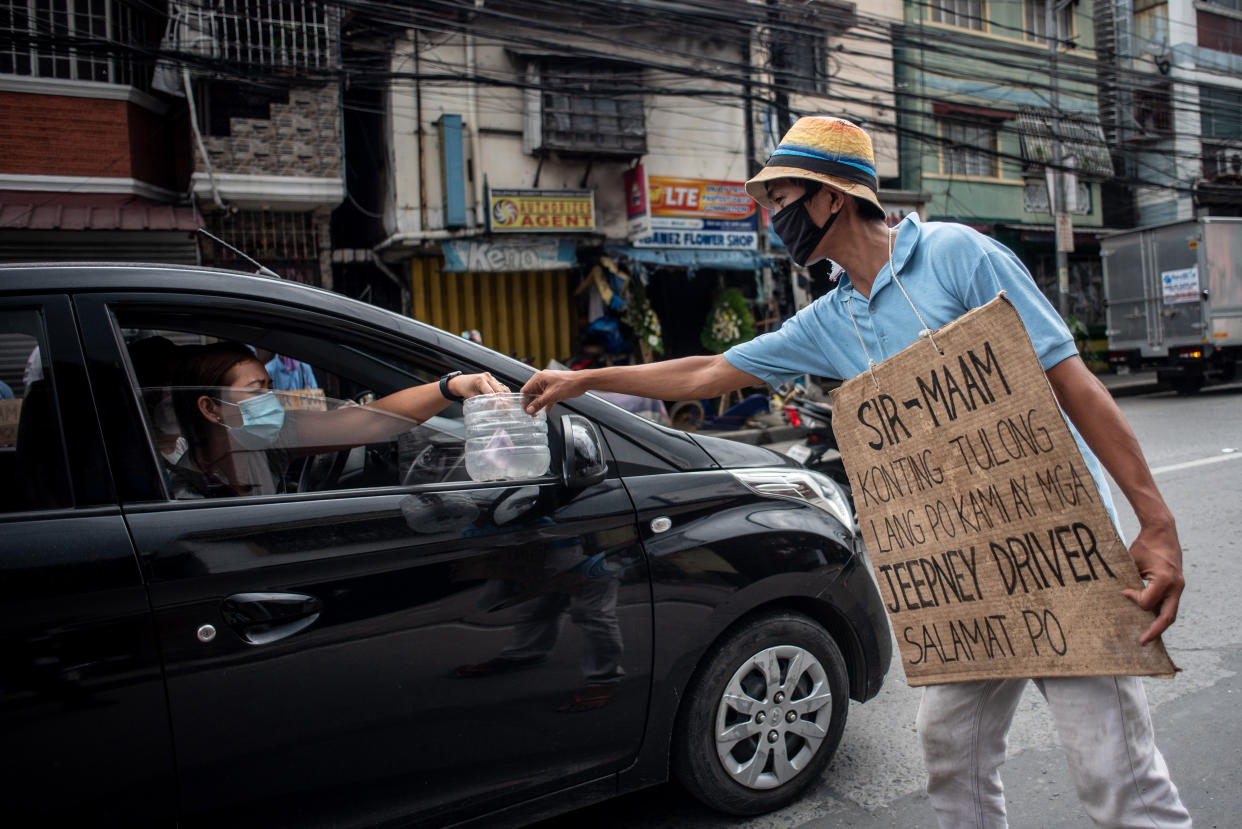Philippines Needs $31.8 Billion Recovery Plan, Lawmaker Says

By Ian Sayson and Siegfrid Alegado
The Philippines needs 1.56 trillion pesos ($31.8 billion) to help it recover from a record economic contraction, according to a lawmaker.
A larger and consolidated response is needed instead of a “piecemeal approach,” Stella Quimbo, co-chair of the House of Representatives’ panel on economic stimulus, said in an interview Saturday. The focus should be on wage subsidies and low-interest loans for small businesses that employ more than 60% of Filipino workers, she said.
The Philippines plunged into a recession last quarter after lockdowns because of the pandemic, and record job losses slashed gross domestic product. The government revised its economic forecast for this year to a 5.5% contraction, compared with a previous estimate for a 3.4% decline and said that it is unable to fund the 1.3 trillion-peso stimulus package approved by the House in June.
“It’s consumption reduction that caused the contraction pretty much,” Quimbo said. “If we don’t address the loss of jobs and people don’t have money how do we recover? Government has to spend so that confidence comes back.”

The near-term outlook for the Philippine economy has continued to deteriorate and “downside risks are materializing” as the country struggles in containing the virus, Fitch Ratings said. Economic Planning Secretary Karl Kendrick Chua said Friday that 655 billion pesos has been allocated since the lockdowns in mid-March to cope with the pandemic.
Quimbo’s stimulus bill, passed in June in the House of Representatives before the release of second-quarter GDP data, assumed a 3.4% economic contraction this year. The bill, which alloted 708 billion pesos for this year and spreads the rest over the two years through 2022, is still pending in the Senate.
But President Rodrigo Duterte’s economic managers prefer a combination of measures: a smaller 140-billion pesos spending bill and a proposal to cut corporate income taxes, while scaling back on incentives to businesses. The government must conserve its “fiscal stamina” to sustain its fight with the virus, Finance Secretary Carlos Dominguez said Saturday.
Quimbo said the stimulus amount needs to be increased if the government wants to regain the economic losses wrought by the virus. She estimates that the pandemic has cost the economy 2.4 trillion pesos, based on the government’s revised 5.5% contraction estimate this year and its 6.5% growth forecast before the pandemic erupted.
The GDP contraction is already accounted for in the government’s 180 billion peso stimulus plan, which includes 40 billion pesos that companies will get under a proposed corporate income tax reduction and will allow a manageable deficit, Dominguez said in a statement Sunday.
“I agree we have to be thrifty with money because of the uncertainty in front of us,” Quimbo says. But “we are at an impasse and the only way out is a fiscal stimulus. Instead of saving for a rainy day, which we don’t know when will come, government must have a plan to control the virus so it can program its spending to stimulate the economy.”
© 2020 Bloomberg L.P.


